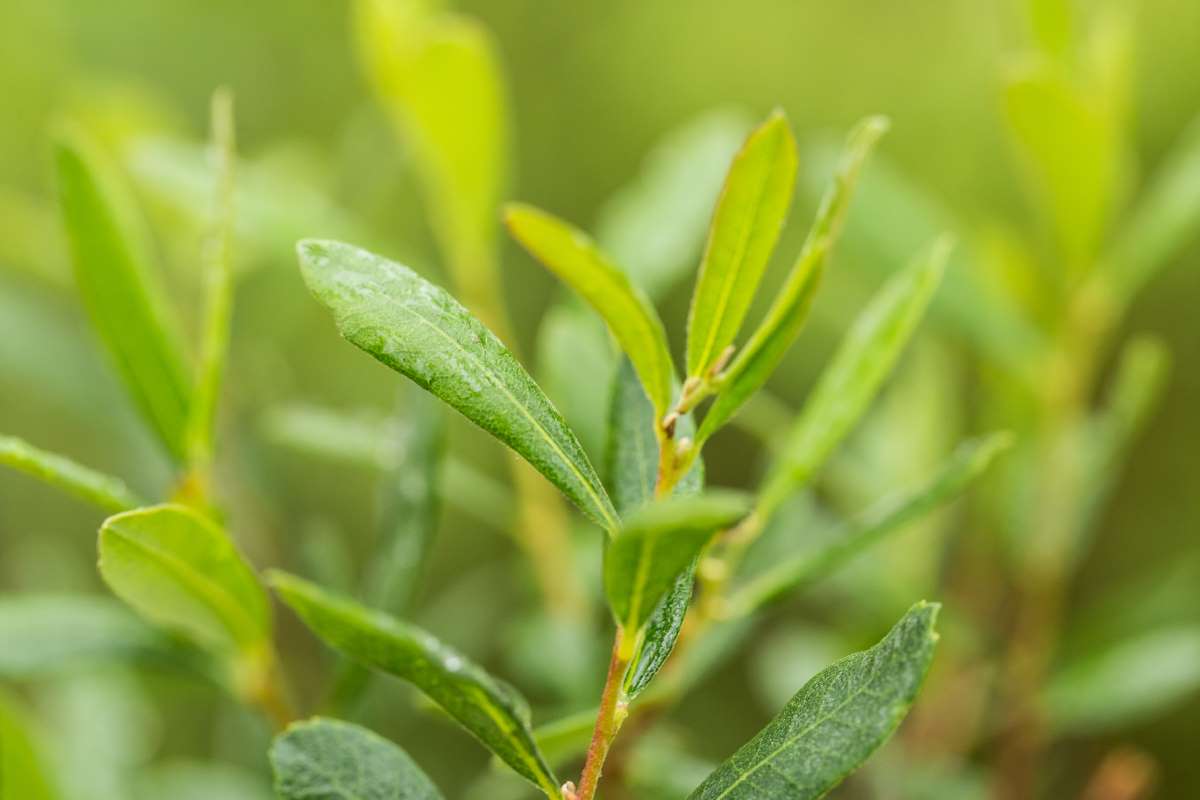Description
Myrica –
There are about 50 species of dioecious or monoecious, deciduous and evergreen, usual suckering shrubs and erect trees in this genus. They occur in moist ground worldwide. They range in height from 5′ feet tall to 100′ feet tall. They have alternate, lance shaped to ovate, usually aromatic, dark green leaves. Their fruits are a cluster of bluish black berries enclosed in a white waxy crust. Tiny flowers appear in late spring, both sexes are borne on the same plant, males in elongated catkins, and the females in globular clusters. Many are effective when grown in groups. M. cerifera may also be used as a screening plant, M. gale is a useful bog plant.
Grow in humus rich, moist soil. M. gale will also grow in permanently water logged, acidic soil in part shade.
Prone to leaf spots, stem rots, root rots, dieback, and rust.
M. gale – Sweet Gale – Bog Myrtle – This erect, thicket forming, suckering deciduous shrub from Europe, Northern Asia and North America grows 3-6′ feet tall and wide. From upright branches it carries oval shaped, toothed, aromatic leaves, to 2 ½” long, dark on the top and paler beneath. In mid and late spring it bears yellow brown male catkins, to ½” long, followed by spherical, buff yellow fruit, to 1/8″ across, dotted with resin. Grows well in damp soils.
Zones 1-6





